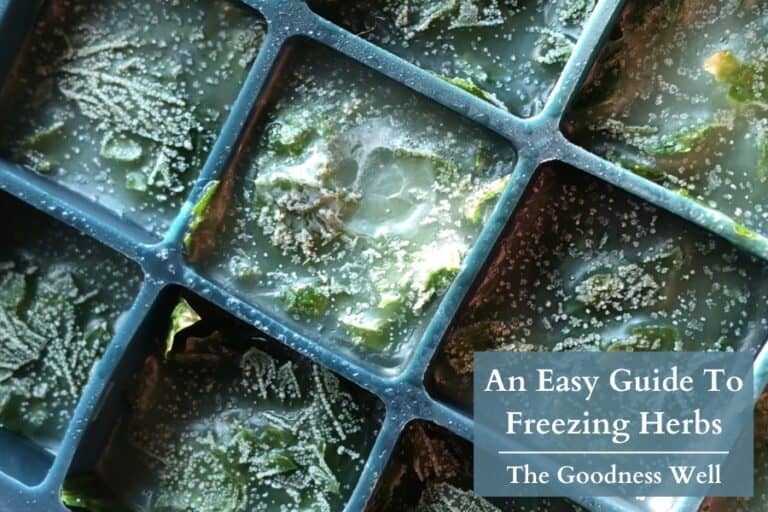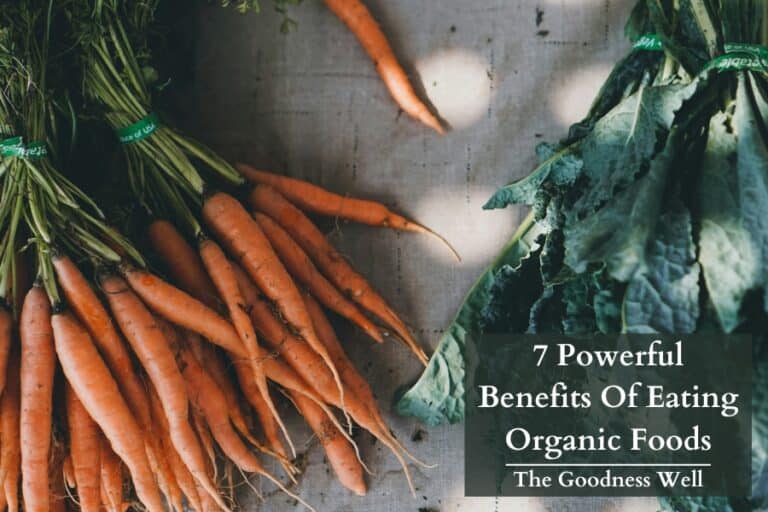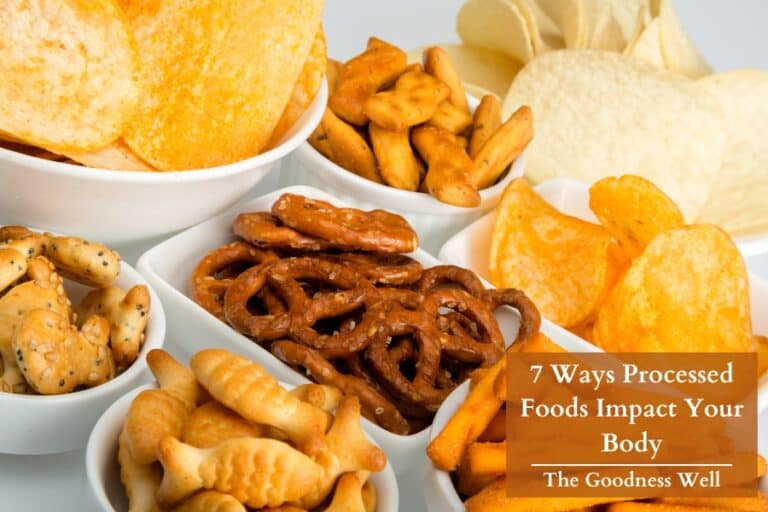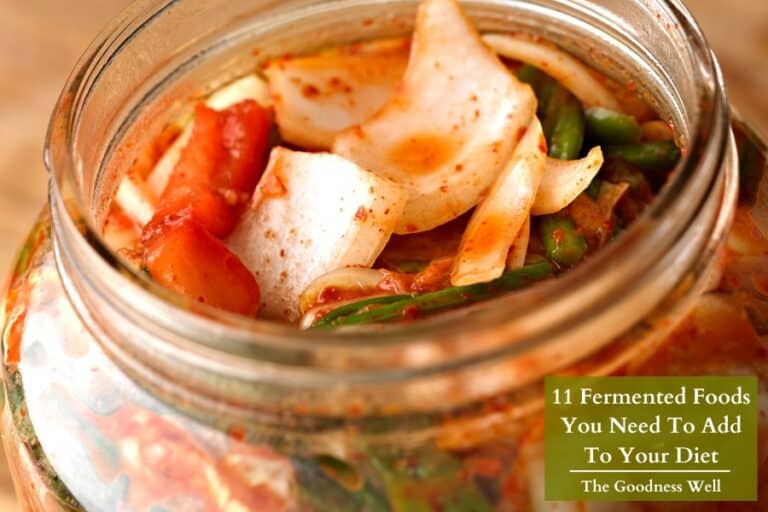The 5 Healthiest Fats To Cook With (And Which to Avoid)
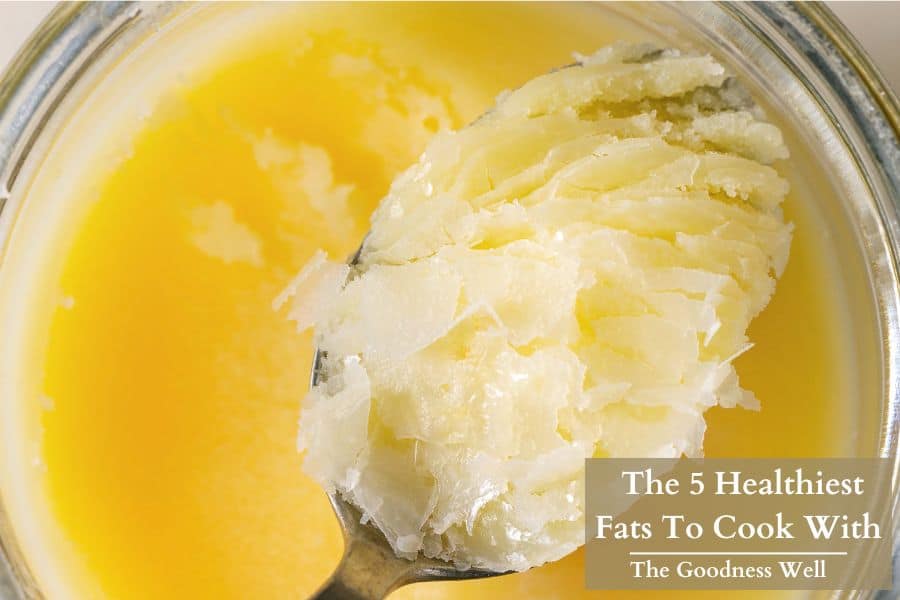
I’m sure you’ve heard many debates about which fats are the healthiest to cook, whether butter is better than oil, or if coconut oil is truly a superfood.
As a certified nutrition coach and self-proclaimed health foodie, I know all too well the importance of choosing the right cooking fats to ensure you’re not only enhancing the flavor of your food but also supporting your overall health!
Cooking with certain fats the wrong way can add oxidized, unhealthy chemicals to your diet, potentially increasing inflammation and the risk of chronic diseases.
So we’re going to lay down the 5 healthiest fats you want to include in your diet, whether you use them to cook on the stove, drizzle over salads, or incorporate them into your baked goods.
Here we go!
A Few Things to Know
Before talking about the healthiest fats to keep in your kitchen, here are a few things to know:
- Smoke Point Matters
- The smoke point is when oil breaks down and releases harmful compounds. For high-heat cooking (frying, grilling), choose oils with high smoke points like avocado oil or ghee. Lower-heat or no-heat cooking is safer with oils like extra virgin olive oil.
- Match the Flavor to the Dish
- Different fats bring different flavors. Grass-fed butter is rich and creamy, perfect for sautéing or finishing dishes, while olive oil has a slightly fruity taste for dressings and drizzling. Coconut oil is the saturated fat king for baked goods!
- Refined vs. Unrefined
- Refined oils have higher smoke points and neutral flavors, good for high-heat cooking. Unrefined oils retain more nutrients and flavor and are best for cold or low-heat methods.
- Types of Fats
- Saturated fats (ghee, coconut oil) were recently proven to not be as unhealthy as once thought. However, unsaturated fats (olive, avocado oil) are technically a healthier option and more versatile.
- Storage is Key
- Store oils in cool, dark places to prevent them from going bad.
- Temperature Control
- Even high smoke-point oils can break down under extreme heat. For instance, leaving any oil sitting by itself too long on the stove can cause it to oxidize.
Now, let’s get to the good stuff!
Top 5 Healthy Fats For The Kitchen
5. Grass Fed Butter
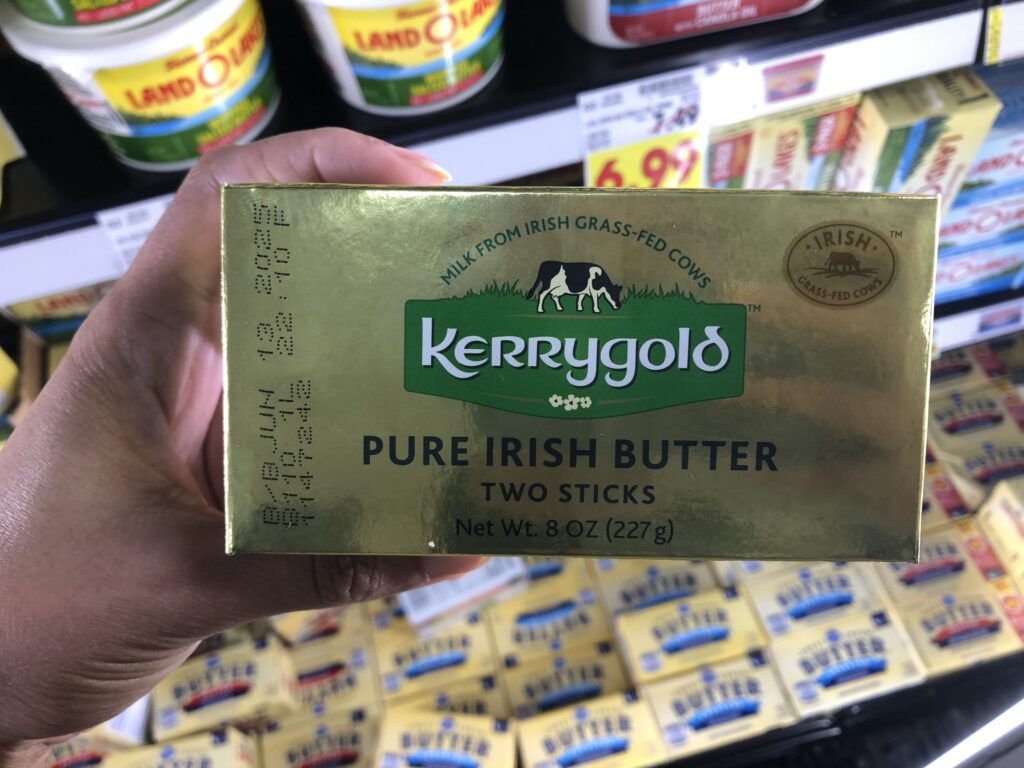
Grass-fed butter is packed with fat-soluble vitamins (A, D, E, K), omega-3 fatty acids, and conjugated linoleic acid (CLA), which support heart health and help reduce inflammation 🧈
It comes from cows that graze on grass, which boosts its content of omega-3s and antioxidants, unlike conventional butter made from grain-fed cows.
Many store-bought butters are actually blended with inflammatory oils like canola or soybean oil, which can promote inflammation.
Grass-fed butter contains none of these additives and gives you pure, high-quality fats.
Our only issue with butter is its low smoke point, so it’s best to be used for things like low-heat sauteeing and baking.
- Best for: Low to medium-heat cooking, baking, spreading
- Foods: sauteed veggies, spreads, pancakes, baked goods
- Smoke point: 300°F (150°C)
- Flavor profile: Rich, creamy, slightly sweet with a stronger butter flavor compared to regular butter
- Health benefits: Higher in omega-3 fatty acids and conjugated linoleic acid (CLA), which may support heart health; rich in fat-soluble vitamins like A, D, E, and K
- Quick tip: Use for finishing dishes like vegetables or steaks for more flavor or as a spread for bread or baked goods.
4. Grass-Fed Ghee
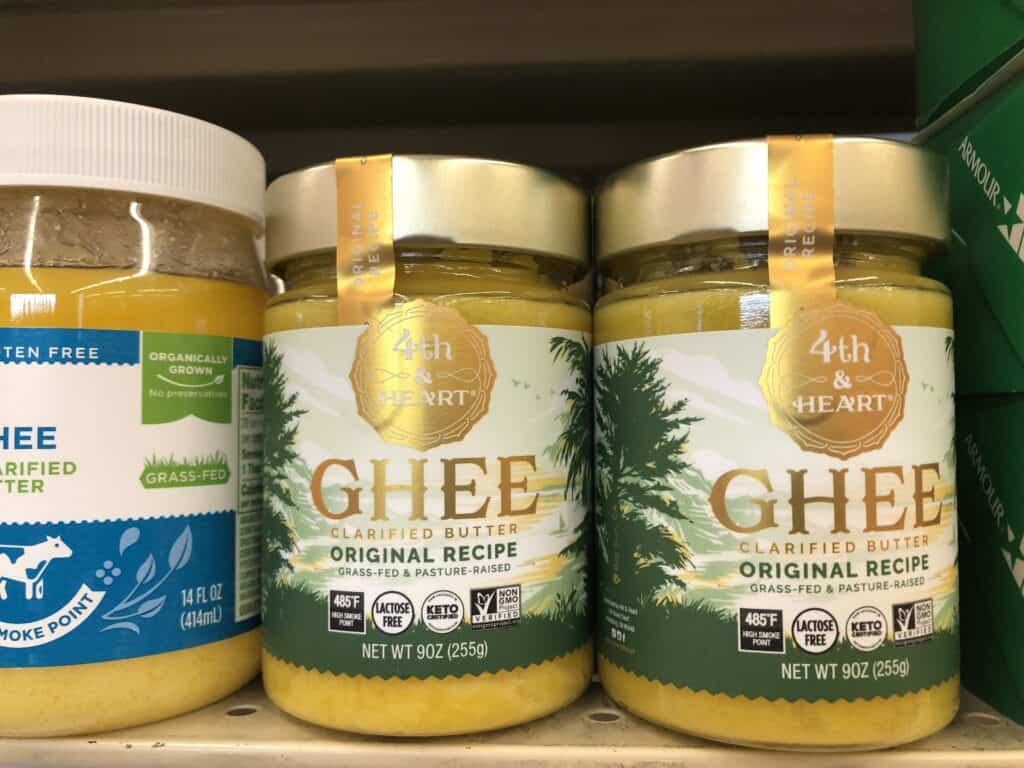
Ghee is a clarified butter (meaning the milk solids have been taken out) with a rich, nutty flavor
Like butter, ghee is rich in fat-soluble vitamins like A, D, and E, and contains conjugated linoleic acid (CLA), which supports heart health and can help reduce inflammation.
Ghee has the upper hand on butter because it has a much higher smoke point, is easier to digest, and is also lactose-free (even though a serving of butter has almost undetectable amounts of lactose).
Be sure to choose grass-fed ghee which is richer in omega 3 fatty acids.
We keep ghee in our home specifically for steaks and other meat that needs to be cooked on the stove for longer periods.
- Best for: High-heat cooking, sautéing
- Foods: Steaks, any meat, fish, eggs, pancakes
- Smoke point: 485°F (252°C)
- Flavor profile: Rich, nutty, more intense than butter
- Health benefits: Contains fat-soluble vitamins, CLA, and easier to digest than butter
3. Coconut Oil

The flavor and high smoke point of coconut oil make it one of our favorites to cook and bake with 🥥
It’s rich in medium-chain triglycerides (MCTs), which boost metabolism, support brain health, and provide anti-inflammatory benefits.
Coconut oil comes in two main types: refined and unrefined.
Refined coconut oil has a high smoke point of 450°F (232°C), making it great for high-heat cooking like frying or roasting.
On the other hand, unrefined coconut oil, which has a lower smoke point (350°F/177°C), is perfect for medium-heat cooking and baking.
We even use unrefined as a moisturizer in our home! 🥥
- Best for: Baking, medium-high heat cooking,
- Foods: Baked goods, pancakes, veggies, curries, fish, chicken, eggs
- Smoke point: 450°F (232°C)
- Flavor profile: Sweet, nutty (unrefined has stronger coconut flavor)
- Health benefits: Contains medium-chain triglycerides (MCTs), boosts metabolism
- Quick tip: Use refined coconut oil for a neutral flavor in cooking
2. Extra Virgin Olive Oil
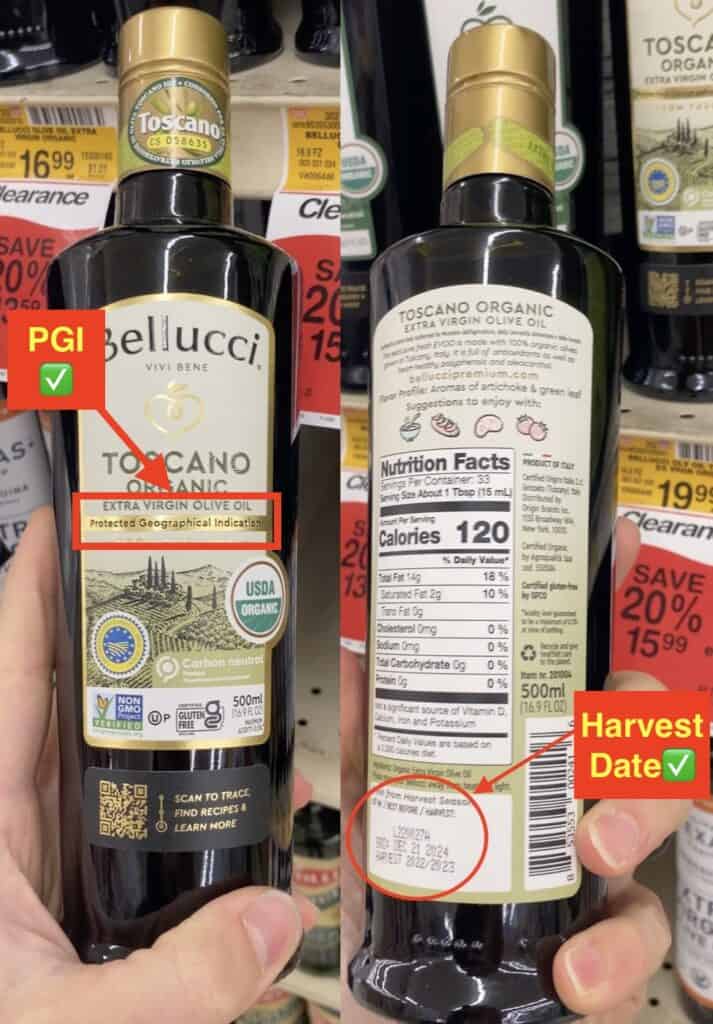

We all know and love olive oil 🫒
It’s been the main cooking oil in our households for a while now (although it should be avocado oil!)
Packed with monounsaturated fats and antioxidants, it’s a cornerstone of the Mediterranean diet, one of the most proven heart-healthy diets there is.
While we recommend avocado oil due to its higher smoke point, olive oil is still perfect for low to medium-heat cooking, as well as for drizzling over salads or finished dishes.
- Best for: sauteeing, salads, dressings
- Foods: (low-heat) fish/seafood, veggies
- Smoke point: 375°F (191°C)
- Flavor: Rich, fruity, slightly peppery
- Health benefits: Heart-healthy monounsaturated fats, high in antioxidants
- Quick tip: Store in a cool, dark place to preserve quality

Most extra virgin olive oil isn’t truly extra virgin, and some aren’t even 100% olive oil. Here’s how to choose authentic extra virgin olive oil.
1. Refined Avocado Oil
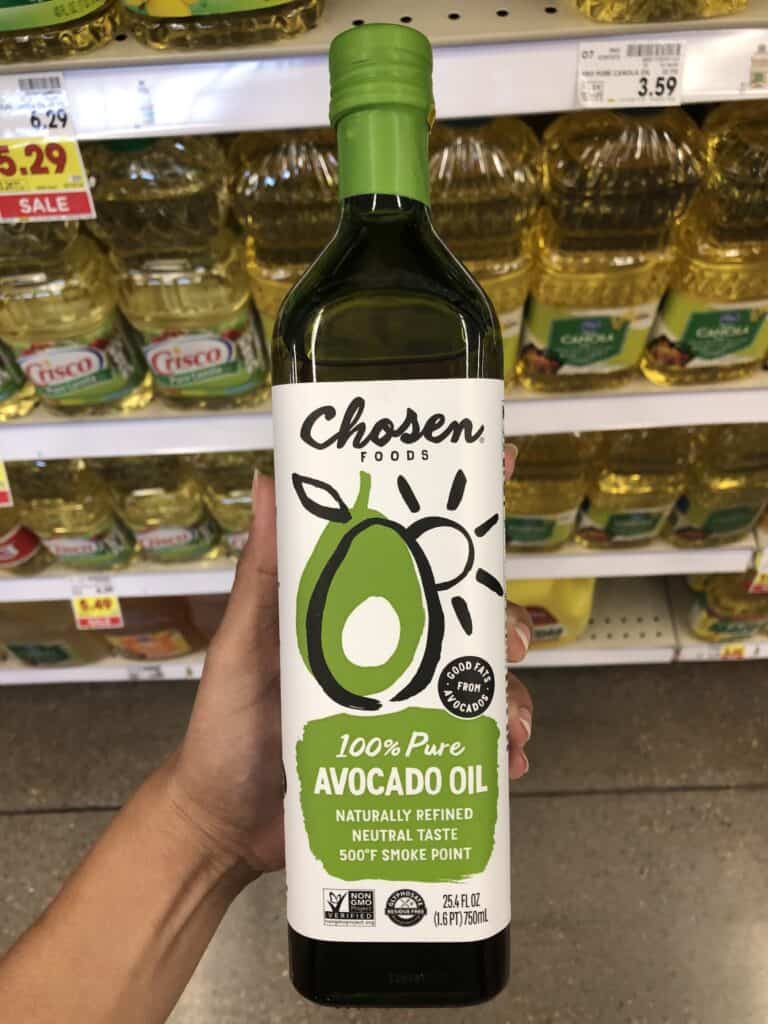
Refined avocado oil is #1 for a reason 🥑
It has the highest smoke point of the crew here, can be used to cook pretty much any food in any kind of way, and is rich in heart-healthy monounsaturated fats and antioxidants.
It’s a staple in our household! (and the base for my famous healthy mayo recipe)
Its high smoke point means it won’t produce those harmful compounds we discussed whether you’re pan-frying, grilling, or using any other high-heat cooking method.
If you’re baking or using avocado oil for something other than high-heat cooking, go with unrefined avocado oil as it has more nutrients and a better flavor than refined.
- Best for: High-heat cooking, pan frying, grilling
- Foods: Eggs, poultry, meat, fish, veggies
- Smoke point: 520°F (271°C) (refined). Unrefined has a lower smoke point
- Flavor profile: Mild, buttery, slightly grassy
- Health benefits: Rich in oleic acid, supports nutrient absorption
- Quick tip: Healthy substitute for vegetable oil in baking and dressings
Fats to Avoid ❌
Now that we know what the good stuff is, let me show you which fats to avoid cooking with

- Vegetable Oils: Oils like canola, soybean, and corn oil are highly processed and rich in omega-6 fatty acids, which can promote inflammation when consumed in excess.
- Blended Butters/Spreads: Many store-bought butters and spreads are blended with those same inflammatory oils like canola or soybean. Choose pure, unprocessed fats like grass-fed butter or ghee.
- Trans Fats: Found in processed foods, margarine, and some baked goods, trans fats raise bad cholesterol (LDL) and lower good cholesterol (HDL), which increases the risk of heart disease.
- Hydrogenated Oils: Common in many processed and fast foods, hydrogenated oils undergo chemical changes that are linked to cardiovascular disease.

Choosing the right fats for your meals doesn’t just matter in terms of flavor but overall health as well!
You’re now equipped to pick the healthiest and best-suited fat for your meal whether you’re sautéing, baking, or drizzling.
Until next time, happy cooking!
FAQ
The healthiest fat to cook with is refined avocado oil, which has a very high smoke point and is rich in heart-healthy monounsaturated fats and antioxidants.
The top 3 healthiest fats are avocado oil, extra virgin olive oil, and coconut oil. These fats are rich in beneficial nutrients like monounsaturated fats and antioxidants, supporting heart health and metabolism, and are versatile for almost any type of cooking.
The healthiest fat for frying is refined avocado oil due to its high smoke point of 520°F (271°C) which prevents it from breaking down and releasing harmful compounds. It’s also rich in heart-healthy monounsaturated fats and antioxidants, making it both stable and nutritious for frying.

